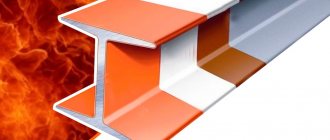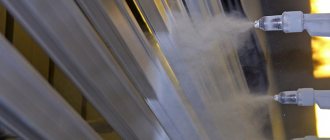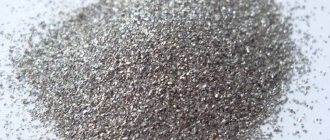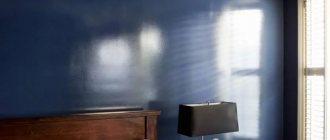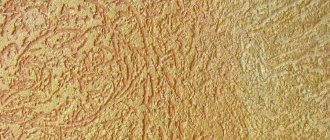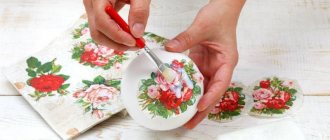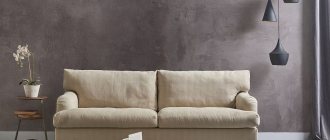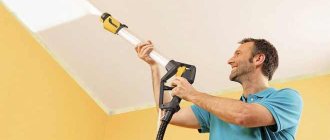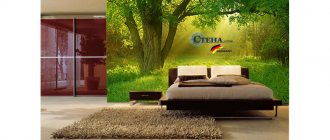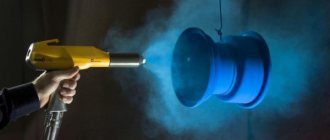Material structure
In its structure, this coloring matter is a dispersive multicomponent mixture of solid particles. It is based on powder polymer and pigment. The constituent elements of dispersion powder vary depending on the functional purpose and area of application of the paint. The composition is varied. This may include various impurities in the form of:
- fillers, for example aluminum oxides or titanium dioxides;
- pigment to obtain varied color depths;
- epoxy resin hardeners;
- film-forming resins;
- additives of various acrylates.
One of the most important advantages of the powder product is that it does not contain solvents that are highly toxic and flammable. That is, it is practically safe for humans and does not have a harmful effect on the natural environment.
All components of the color base are dry, do not stick to each other, and have excellent flowability. The consistency of the powder does not change over time and does not thicken. Therefore, there is no need to dilute it with special solvents, unlike water-dispersion paints, for example, acrylic.
Such indicators of the quality of the coloring matter as adhesion, ability to electrify, and flowability directly depend on the properties of the pigment.
The amount of fillers and pigment can be more than half of the total composition. This is determined by the depth of color and the purpose of the product. The pigment used for this coloring material is no different from the pigment that is added to other liquid paints, such as acrylic paints.
Physics of the dyeing process
Using an external electric field, the particles of the coloring product are given a charge opposite to the charge of the surface intended for painting. Charged powder particles are forced to settle on the product, forming a thin layer. A special spray chamber catches charged paint dust particles with electric field strengths that are insufficient to adhere to the charged plane of the object, and reuses them for painting.
It is possible to re-spray components that do not stick to the surface being processed. The powder is completely consumed. This determines the high cost-effectiveness of this technology.
Next, baking of the sprayed surface begins. The painted product is transferred inside a special chamber. Inside the oven at high temperature, the coating polymerization process takes place.
Powder coating
Powder coating of car wheels
The main methods of applying powder paints to the surface to be painted:
- electrostatic spray;
- in a "fluidized bed".
Powder spraying is carried out with a special gun in a spray booth, the ventilation system of which has powder catchers for its reuse.
When coating in a “fluidized bed”, the powder is in a pseudo-liquid state due to uniform blowing with air. The paint is applied to the surface of the part by dipping the part into a container of fluidized powder.
In both cases, before application by a special electrode, the powder particles are given a certain electrostatic charge, which ensures uniform distribution of the powder and its retention on the surface of the part to be painted.
After applying the powder, the part is heated in an oven, which forms a monolithic liquid coating. Thermoset plastics additionally undergo polymerization.
The existing method of flame spraying of powder paints and varnishes has not become widespread due to the instability of the technology and the significant influence of the human factor.
Classification of materials
It is customary to classify coloring materials according to the type of polymers included in the composition. Based on the appearance of the main components, the paint can be suitable for outdoor or indoor use. The most popular grouping is by the method of film formation on the surface and by the method of layer hardening.
It is customary to distinguish two large classes of paints based on the type of film-forming substance. Thermoplastic and thermosetting paints are the main types of powder paints based on their film-forming abilities. They also have an extensive classification.
Thermoplastic
Thermoplastic powder paints contain coloring components based on substances that form a coating in the form of a film due to the melting of paint elements and their cooling. The formation of a layer is not accompanied by chemical reactions. However, the film may dissolve if the temperature is not maintained. The choice of paint is made depending on the conditions:
- For decorative purposes, thermoplastic paint is used, the base of which is vinylite. This dye is suitable only for painting indoors, while its fairly thin thickness provides good protection against moisture at room temperature.
- For exterior work and covering indoor surfaces, paint based on polyvinyl chloride is suitable. It is characterized by high weather resistance and resistance to chemicals.
- The high physical and mechanical properties of the polyethylene-based layer have led to the fact that this polymer paint is actively used for painting pipelines for various purposes.
- The polyamides that make up polyamide paint have high levels of aesthetic appeal and are used for decorative purposes for painting both indoors and outdoors.
Thermoset
Thermosetting powder paints are a thermosetting film former. Here the constituent particles fuse and a chemical reaction occurs. Their advantage is that the coating does not melt or dissolve, and is characterized by high hardness and resistance to various defects. Therefore, paint is actively used in mechanical engineering. It may contain various epoxy and polyester resins.
Powder paint of this type requires strict adherence to the painting technique. Only in this case can a positive result be achieved that meets all the parameters of color fastness and weather resistance. Paint Features:
- Epoxy substances give it high mechanical strength and durability. However, significant defects can form on the surface under the influence of solar ultraviolet radiation.
- Compared with epoxy paint, polyester paint does not deteriorate outdoors, used for outdoor painting. It has high color stability.
- The acrylate base provides high resistance to a variety of alkaline compounds. The saturation of the color pigment is maintained for a long time.
Advantages of polymer powder coatings
There are several criteria by which the technical, economic and operational performance of polymer powder paints should be assessed: 1. Economic advantages: a. A small amount of waste, surface painting is carried out by 96% of the sprayed substance; b. Possibility of reuse of unreacted paint. Provided that the painting was carried out in a specially designed chamber; c. There is no need to purchase special cleaners and solvents, which significantly reduces the cost of painting services; 2. Impact on the environment: a. The composition does not contain harmful, volatile or carcinogenic substances; b. The storage and painting process has a low risk of fire; c. The release of unpleasant “chemical” odors is significantly reduced. 3. Compared with traditional liquid paint products: a. The performance properties and quality of the applied coating are much higher; b. The lower porosity of the layer significantly reduces hygroscopicity and increases the impact resistance of the product; c. There is no need for additional preparation of the composition for work; d. Irreversible loss of powder is 2-5%; loss of liquid when applied to the same surface of a complex configuration can be up to 45%. e. Curing or chemical polymerization is carried out in 30 minutes;
Surface type
The surface treated with this paint can have a matte or glossy effect. The matte colorant contains scaly particles. The different reaction characteristics of the impurity provide the matte appearance. Mainly used in mechanical engineering.
The glossy paint composition contains various epoxy and polyester film formers. It is also based on the pigment necessary to realize a certain color.
The glossy surface is characterized by high reflective properties and resistance to corrosion processes, which is important for the automotive industry.
Application in car repair
At the moment, acrylic paints are most often used to mask defects on car wheels. Their practicality lies in the fact that they can be sold in spray cans, which is very convenient for painting. You can get a high-quality result if you carefully spray acrylic paints in a small layer. The attractiveness of these cans is that they can be used to achieve a glossy surface. Buyers are offered a huge selection of colors. A significant disadvantage of acrylic painting materials is that they do not provide chip restoration.
To reliably restore chips, the damaged surface must be primed. Powder paint has good adhesion to the primed coating, that is, it adheres well to it, while efficiently hiding defects. The assortment includes cans that have different concentrations of pigment and allow you to achieve different depths of color. They are able to recreate a glossy surface.
Advantages of use
The main advantageous qualities of powder-based coloring material are as follows:
- creating a durable and high-quality surface;
- harmlessness to humans and nature;
- affordability;
- efficiency;
- even thickness of paint layers;
- high hardening speed;
- high durability of thin paint.
Surfaces painted with high-tech low-temperature paint account for about one sixth of all painting. But now, thanks to the development of technology, there is a tendency for this figure to steadily increase in favor of powder-based paints.
HOW IS THE COST OF POWDER COATING OF METAL AND METAL PRODUCTS CALCULATED?
The price of powder painting of metal products is calculated individually for each order and depends on a number of factors presented below.
Prices per square meter for powder coating of metal and metal products are calculated based on the following factors:
- Total weight and overall dimensions of the product.
- Estimation of the cost of surface preparation (cleaning, etc.).
- The need for painting in two or more colors.
- Complexity of the surface being processed.
- Urgency.
- Batch size.
